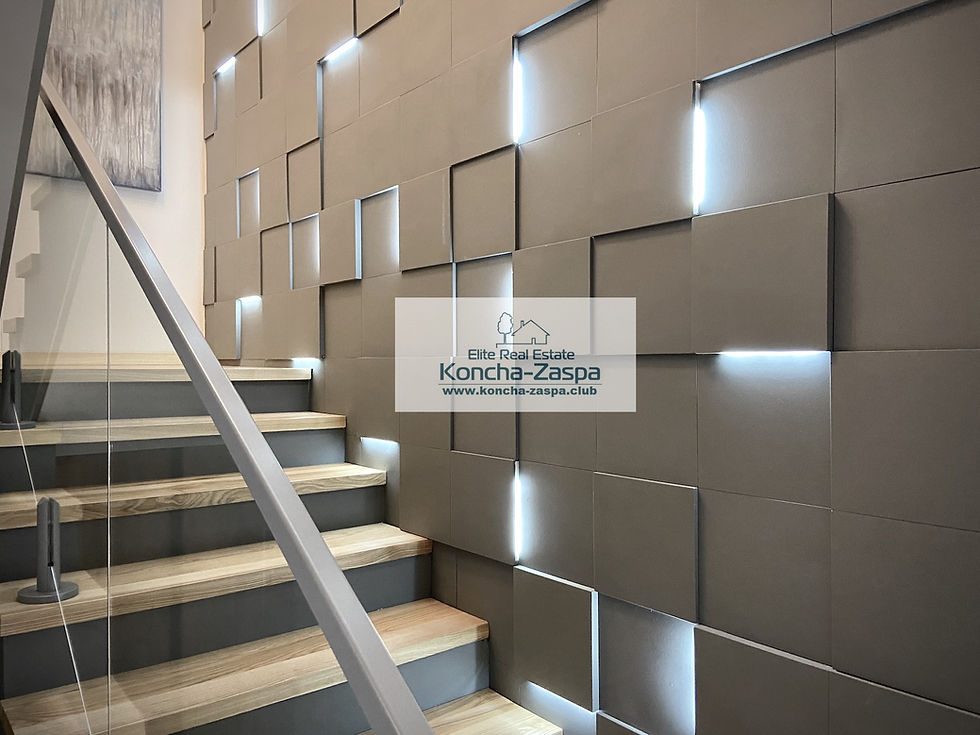LED lighting
- www.konch-zaspa.club

- Mar 14, 2023
- 4 min read
In the last few years, there has been a noticeable trend towards LEDs in all their applications. Including in interior design. Scientific research has changed the very approach to lighting spaces, both public and personal. And manufacturers have made these developments available to millions of people. A lot has changed technically, but the needs of users have grown enormously. This includes people's understanding of what good lighting and its role in shaping space is.
Emotional lighting is achieved through two types of lighting: accent lighting, which is lighting the room unevenly, and the use of contrasts, which creates a hierarchy of perceptions of space, in which it is divided into more and less important objects. Light is a very handy tool in this regard, because in the past these tasks were solved in design with form and color. Light makes it possible to change these accents in space in a matter of seconds, and not only individual objects, but entire zones.
LEDs
There is no denying the fact that LEDs were the most important factor that led to such a significant change. The capabilities of LEDs allow you to integrate colored lighting into the interior. Innovative LED solutions often have functions to adjust the color temperature, which allows you to "play" with the interior, adapt lighting for different tasks, such as training, recreation, or meetings of guests.
So what to choose — functional or decorative lighting? It all depends on the creative idea of the designer and the purpose of the room. The functional type of lighting, which is often called "conventional" lighting, is suitable if you want to free up or zone the space, add more light. Decorative lights are suitable as an addition to the interior design, as well as if there is a need to emphasize the character or taste preferences of the owners.
Benefits of LEDs
As with any other innovations that are used in the interior and not only, LEDs have a lot of positive characteristics, based on which you can build a unique lighting system that can for a few seconds to change completely and completely all the space around us. The possibilities are truly endless.
Economy
The main advantage of LEDs — efficiency, because power consumption is much lower than that of conventional fixtures with the same output. Energy efficiency can be up to 90% compared to incandescent bulbs.
Any color you can imagine

The advent of blue LED has completed the standard RGB circuit, which can generate almost any color and millions of shades. That's why it became possible to change the space, to get different color temperatures or emission colors. Previously, inefficient and cumbersome color filters were used for this purpose.
Color accents of red and orange energize, green and purple are soothing, and blue puts you in a philosophical mood. Imagine that you can change the color lighting in a room without repainting the walls. With a choice of 16000000 shades, you can regularly renew your interior and create an ambiance to suit any mood.
Compact
No other artificial light source does not equal the LED on this parameter. This is what allows you to create such lighting devices, which we start using in the home, such as LED strip.
Compactness has spawned a whole trend that we are seeing as the integration of light into spaces and finish materials. The first time this trend appeared in the 1970s in Europe, when low-voltage halogen lamps became commonplace. The introduction of LEDs began a second wave of use in interiors of various systems of built-in and concealed lighting. Light is integrated into furniture, glass, and walls — a dream of the dreamers is becoming a reality, and even a trend.
Easy to control
LEDs are digital light sources, which can be easily linked to an intelligent control system. And it works both for the home and for facades of high-rise buildings, light-dynamic lighting which can be changed through the use of even a regular phone or tablet.
Another advantage of LED lamps is environmental friendliness, as they contain no harmful substances, mercury vapor and lead, so they do not require special disposal.
You can also note the absence of thermal, infrared and ultraviolet radiation, as well as quality light without flicker and glare. Today the use of stretch ceilings is widespread, and therefore there is a need for fixtures with less heating. This problem is also solved by built-in LED lighting fixtures. Thanks to an advanced heat dissipation system, LED lamps do not heat up.
One of the latest trends in home lighting is the emergence of filament LED lamps. These light sources, which have a filament LED "filament" instead of tungsten. The lighting effect they resemble traditional incandescent lamps, which allows them to look harmoniously in chandeliers and other decorative lamps. In this case, these light sources have all the advantages of LEDs. Familiar to the consumer form of filament LED lamps allows "easier" from a psychological point of view to switch to LED lighting. The classic design of the lamps makes them attractive not only when they are lit, but also when the light is off.












Comments